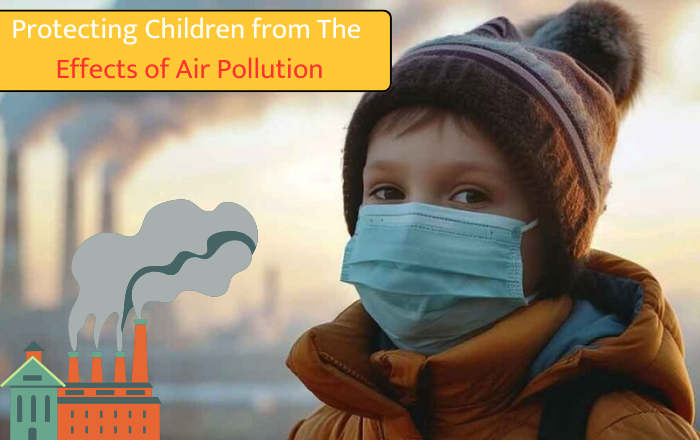Protecting children from air pollution is no longer a choice—it’s a necessity. With worsening urban air quality and rising health risks, children are among the most vulnerable to its effects. Their lungs are still developing, and they breathe in more air per body weight than adults. As air quality declines in many cities, parents must act fast to minimize their child’s exposure and protect long-term health.
Understanding the Impact of Air Pollution on Children
Protecting children from air pollution starts by recognizing its severe consequences. Studies link polluted air to asthma, respiratory infections, impaired lung growth, and even cognitive delays in children. Long-term exposure has also been associated with increased risks of cardiovascular diseases later in life. Infants and toddlers, in particular, spend more time closer to the ground, where pollutant concentration is higher.
Recognizing Common Sources of Air Pollution Around Your Child
To focus on protecting children from air pollution, parents must first identify common sources:
- Vehicle emissions from nearby roads or heavy traffic zones
- Industrial smoke from factories or construction sites
- Indoor pollution such as smoke from cooking, cigarettes, or burning incense
- Fine particles from open waste burning or wildfire haze
Knowing these sources helps parents assess the immediate risks and make more informed daily choices.
Practical Home Strategies for Protecting Children from Air Pollution
Parents can take concrete steps at home to reduce exposure:
- Install air purifiers with HEPA filters in bedrooms and playrooms
- Keep windows closed during high pollution days, especially at night
- Use indoor plants like peace lily or snake plant that help purify air naturally
- Clean surfaces frequently to prevent dust accumulation
- Avoid indoor smoking or using aerosol sprays near children
These small changes can significantly improve indoor air quality and ensure safer breathing environments.
When Outdoors: Minimizing Exposure While Staying Active
Protecting children from air pollution doesn’t mean avoiding the outdoors entirely. Instead, be strategic:
- Check daily air quality index (AQI) before allowing outdoor play
- Choose green spaces like parks away from major roads
- Have children wear N95/KN95 masks on poor AQI days
- Limit outdoor time during morning or evening rush hours
- Avoid strenuous physical activity when pollution levels are high
Smart planning allows children to stay active without compromising their respiratory health.
Strengthening the Immune System to Fight Pollution Damage
Another vital step in protecting children from air pollution is strengthening their natural defenses.
- Ensure a balanced diet rich in antioxidants—vitamin C, E, and omega-3s
- Keep children hydrated to support healthy lung function
- Prioritize sleep to help the body recover from oxidative stress
- Encourage physical activity indoors with clean air to build resilience
Healthier children can better withstand occasional exposure to environmental toxins.
Working with Schools and Communities to Protect Children
Parents should advocate for safer environments beyond the home:
- Urge schools to monitor indoor air quality and invest in purifiers
- Request playground shade trees or barriers to minimize dust
- Join or start community air quality campaigns
- Report nearby pollution sources to local authorities
Protecting children from air pollution becomes far more effective with collective effort.
Conclusion: A Shared Responsibility for Every Parent
Protecting children from air pollution isn’t just about reacting—it’s about preparing. With consistent daily actions, strategic decisions, and broader community involvement, parents can give their children a healthier, safer future. The urgency is real, but so is the power of prevention.



